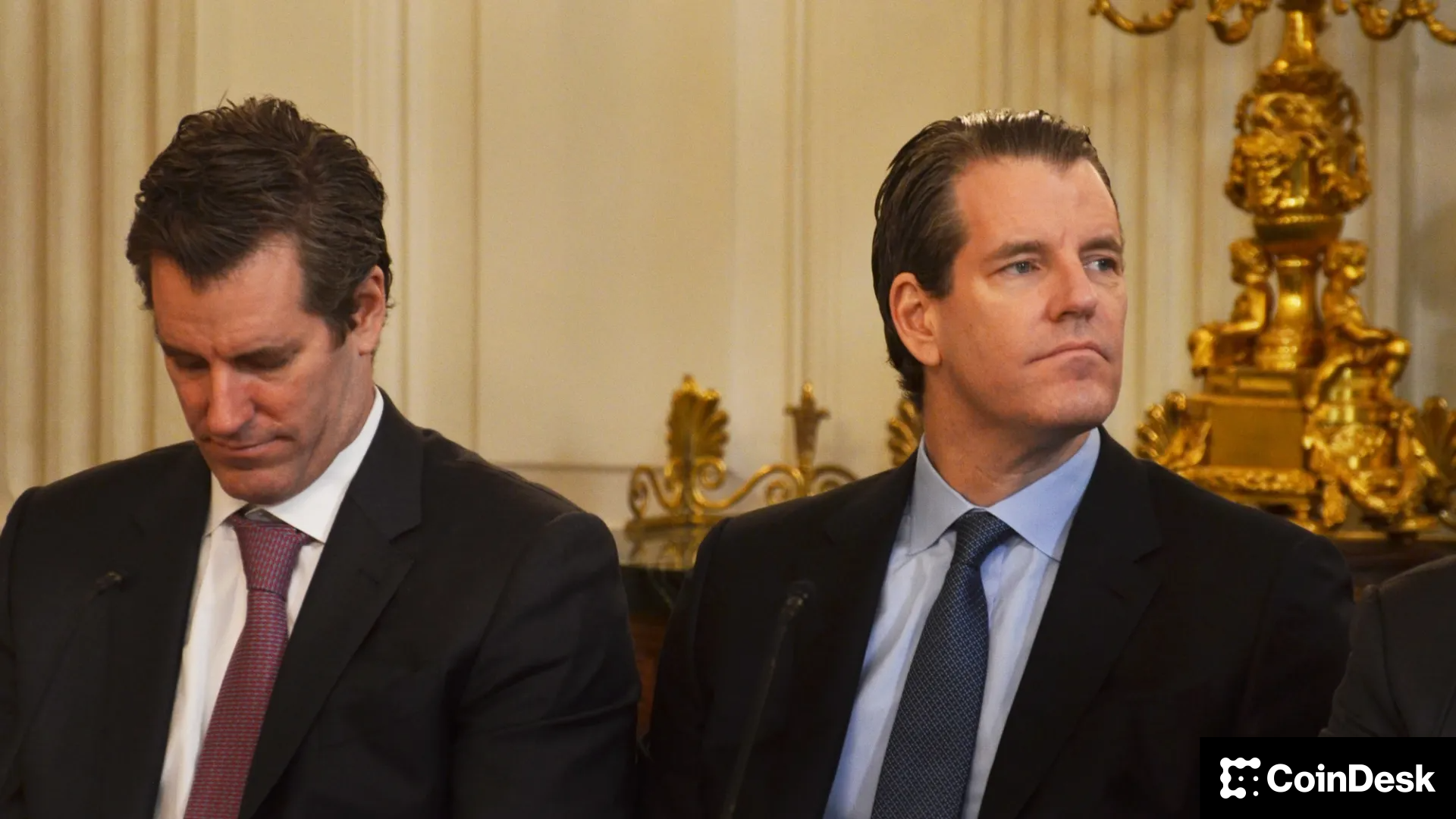Uncategorized
Circle’s IPO Filing Tests Crypto Market Confidence After Trump’s Tariff Shock

After U.S. President Donald Trump’s reelection in November, optimism surged among crypto companies eyeing the public markets. Trump floated big promises: clearer rules for the industry and ambitions to make America the crypto capital of the world.
For a moment, it looked like the floodgates might open. IPO pipelines buzzed with activity. Founders dreamed of ringing the opening bell. But beneath the surface, storm clouds were gathering. A bull market is the lifeblood of successful listings, and few foresaw just how rocky the road ahead would become.
Circle didn’t wait for perfect conditions. After years of false starts and regulatory hangups, the stablecoin issuer finally filed its S-1 with the U.S. Securities and Exchange Commission (SEC) on Tuesday, taking a long-delayed step toward becoming a publicly traded company.
The filing landed with a mix of energy and doubt. Some in the industry saw it as a bullish signal—another crypto heavyweight inching closer to the public markets. Others questioned the timing. Markets remain shaky, and Circle’s path to a successful debut is far from guaranteed.
«I believe Circle will be able to price their IPO and raise capital, however it isn’t going to be easy,” said David Pakman, managing partner and head of venture investments at CoinFund. “Generally, companies going public would like to debut during strong equity markets.”
Equities have been in a free fall since Trump announced so-called reciprocal tariffs on about 90 U.S. trade partners, including China and the European Union, deepening fears of a global recession. Both the S&P 500 and the Nasdaq have dipped 11% and 17% year-to-date, respectively, marking one of the worst quarters in recent years.
As a result, cloud computing firm CloudWeave, which went public last month, saw a disappointing debut, even though the stock rebounded on the second day of trading as investor demand for artificial intelligence companies appears to be stronger than short-term anxiety in markets. Payments app Klarna said it paused its IPO plan earlier today.
But Circle doesn’t just face broader market jitters as a potential threat to its IPO. Analysts have pointed out the company’s financials, which could make it difficult to attract investors.
“While I personally have tremendous respect and appreciation for Circle and their leadership, their financials show the challenges they have faced with growth and the high cost of their distribution partnerships,” Pakman, who noted that he still believes long-term value of the company, said.
Circle’s IPO filing revealed shrinking gross margins and high spending, which comes at a time when clearer stablecoin regulation could bring increased competition to the market.
“Circle is currently being priced like a traditional crypto business — cyclical, interest rate-dependent, and not diversified enough. If Circle can evolve to look more like a payments network with high margins and strong moats, its valuation might reflect that,” Lorenzo Valente, a crypto analyst at ARK Invest, wrote in a post on X.
Many aspects about the company’s structure seem to be in question, including how its revenue-sharing agreement will evolve, as well as the growth of Base, the blockchain created by Coinbase that uses Circle’s USDC, according to Valente.
“One precaution Circle has taken is a lower valuation. But, still hurdles remain as the rollout and implementation of digital rails in the banking system will take time,” said Mark Connors, chief investment strategist at Risk Dimensions, a New York-based Bitcoin investment advisory.
Circle’s rumored valuation of $4 billion to $6 billion, roughly 13 to 20 times its adjusted EBITDA, is in line with Coinbase and Block, and “not necessarily cheap, especially considering its recent drop in profitability,” Valente said.
“We do like the prospect for the growth in US-backed stablecoins based on the growing commercial use, shift in U.S. the regulatory and legislative (GENIUS Act) winds and the U.S. Treasury’s incentive to find new buyers of its growing stack of U.S. T-Bills,” according to Connors.
Over $6 trillion of Treasury bills will be rolled over this year, with additional issuance likely to fund the still-growing U.S. deficit.
Despite market uncertainty about the remaining year, several other crypto natives are looking to fulfill their IPO dreams, including Kraken, Gemini, Blockchain.com, Bullish (the parent company of CoinDesk) and BitGo. Even more crypto firms are rumored to be in talks to go public as well.
However, others will likely put their IPO plans on hold as they wait for regulatory clarity and better market conditions. Analysts at crypto M&A advisory firm Architect Partners expect the majority of IPOs to be filed in the second half of 2025 after written regulations and policies are clearly completed.
Business
Crypto Trading Firm Keyrock Buys Luxembourg’s Turing Capital in Asset Management Push

Crypto trading firm Keyrock said it’s expanding into asset and wealth management by acquiring Turing Capital, a Luxembourg-registered alternative investment fund manager.
The deal, announced on Tuesday, marks the launch of Keyrock’s Asset and Wealth Management division, a new business unit dedicated to institutional clients and private investors.
Keyrock, founded in Brussels, Belgium and best known for its work in market making, options and OTC trading, said it will fold Turing Capital’s investment strategies and Luxembourg fund management structure into its wider platform. The division will be led by Turing Capital co-founder Jorge Schnura, who joins Keyrock’s executive committee as president of the unit.
The company said the expansion will allow it to provide services across the full lifecycle of digital assets, from liquidity provision to long-term investment strategies. «In the near future, all assets will live onchain,» Schnura said, noting that the merger positions the group to capture opportunities as traditional financial products migrate to blockchain rails.
Keyrock has also applied for regulatory approval under the EU’s crypto framework MiCA through a filing with Liechtenstein’s financial regulator. If approved, the firm plans to offer portfolio management and advisory services, aiming to compete directly with traditional asset managers as well as crypto-native players.
«Today’s launch sets the stage for our longer-term ambition: bringing asset management on-chain in a way that truly meets institutional standards,» Keyrock CSO Juan David Mendieta said in a statement.
Read more: Stablecoin Payments Projected to Top $1T Annually by 2030, Market Maker Keyrock Says
Business
Crypto Trading Firm Keyrock Buys Luxembourg’s Turing Capital in Asset Management Push

Crypto trading firm Keyrock said it’s expanding into asset and wealth management by acquiring Turing Capital, a Luxembourg-registered alternative investment fund manager.
The deal, announced on Tuesday, marks the launch of Keyrock’s Asset and Wealth Management division, a new business unit dedicated to institutional clients and private investors.
Keyrock, founded in Brussels, Belgium and best known for its work in market making, options and OTC trading, said it will fold Turing Capital’s investment strategies and Luxembourg fund management structure into its wider platform. The division will be led by Turing Capital co-founder Jorge Schnura, who joins Keyrock’s executive committee as president of the unit.
The company said the expansion will allow it to provide services across the full lifecycle of digital assets, from liquidity provision to long-term investment strategies. «In the near future, all assets will live onchain,» Schnura said, noting that the merger positions the group to capture opportunities as traditional financial products migrate to blockchain rails.
Keyrock has also applied for regulatory approval under the EU’s crypto framework MiCA through a filing with Liechtenstein’s financial regulator. If approved, the firm plans to offer portfolio management and advisory services, aiming to compete directly with traditional asset managers as well as crypto-native players.
«Today’s launch sets the stage for our longer-term ambition: bringing asset management on-chain in a way that truly meets institutional standards,» Keyrock CSO Juan David Mendieta said in a statement.
Read more: Stablecoin Payments Projected to Top $1T Annually by 2030, Market Maker Keyrock Says
Business
Gemini Shares Slide 6%, Extending Post-IPO Slump to 24%

Gemini Space Station (GEMI), the crypto exchange founded by Cameron and Tyler Winklevoss, has seen its shares tumble by more than 20% since listing on the Nasdaq last Friday.
The stock is down around 6% on Tuesday, trading at $30.42, and has dropped nearly 24% over the past week. The sharp decline follows an initial surge after the company raised $425 million in its IPO, pricing shares at $28 and valuing the firm at $3.3 billion before trading began.
On its first day, GEMI spiked to $45.89 before closing at $32 — a 14% premium to its offer price. But since hitting that high, shares have plunged more than 34%, erasing most of the early enthusiasm from public market investors.
The broader crypto equity market has remained more stable. Coinbase (COIN), the largest U.S. crypto exchange, is flat over the past week. Robinhood (HOOD), which derives part of its revenue from crypto, is down 3%. Token issuer Circle (CRCL), on the other hand, is up 13% over the same period.
Part of the pressure on Gemini’s stock may stem from its financials. The company posted a $283 million net loss in the first half of 2025, following a $159 million loss in all of 2024. Despite raising fresh capital, the numbers suggest the business is still far from turning a profit.
Compass Point analyst Ed Engel noted that GEMI is currently trading at 26 times its annualized first-half revenue. That multiple — often used to gauge whether a stock is expensive — means investors are paying 26 dollars for every dollar the company is expected to generate in sales this year. For a loss-making company in a volatile sector, that’s a steep price, and could be fueling investor skepticism.
-

 Business11 месяцев ago
Business11 месяцев ago3 Ways to make your business presentation more relatable
-

 Fashion11 месяцев ago
Fashion11 месяцев agoAccording to Dior Couture, this taboo fashion accessory is back
-

 Entertainment11 месяцев ago
Entertainment11 месяцев ago10 Artists who retired from music and made a comeback
-

 Entertainment11 месяцев ago
Entertainment11 месяцев ago\’Better Call Saul\’ has been renewed for a fourth season
-

 Entertainment11 месяцев ago
Entertainment11 месяцев agoNew Season 8 Walking Dead trailer flashes forward in time
-

 Business11 месяцев ago
Business11 месяцев ago15 Habits that could be hurting your business relationships
-

 Entertainment11 месяцев ago
Entertainment11 месяцев agoMeet Superman\’s grandfather in new trailer for Krypton
-

 Entertainment11 месяцев ago
Entertainment11 месяцев agoDisney\’s live-action Aladdin finally finds its stars




